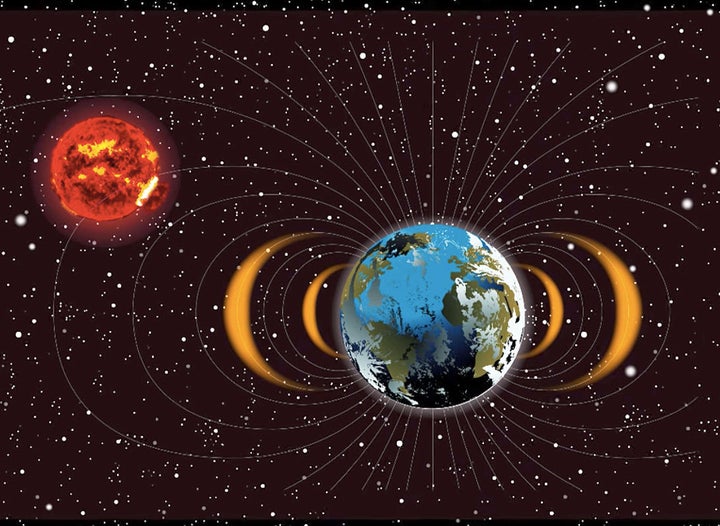
The ongoing movement by scientists and activists to pressure political officials to address global warming and climate change has been growing in recent years. But there’s another earthling-influenced phenomenon we don’t hear too much about: how we affect what happens in space.
According to NASA:
Space weather ― which can include changes in Earth’s magnetic environment ― are usually triggered by the sun’s activity, but recently declassified data on high-altitude nuclear explosion tests have provided a new look at the mechanisms that set off perturbations in that magnetic system.
Earth is surrounded by layers of radiation belts, and as the space agency says in the following video, the Cold War-era experiments of the 1950s and ‘60s produced extra radiation close to Earth.
While those military tests concluded long ago, the after-effects of such actions, now called human-induced space weather, are the focus of a new study published in Space Science Reviews, which offers research access to millions of scientific documents.
As reported in The Scientific Foundation of Space Weather:
These explosions created artificial radiation belts near Earth that resulted in major damages to several satellites. Another unexpected impact of the high-altitude nuclear tests was the electromagnetic pulse that can have devastating effects over a large geographic area (such as the continental United States).
Other anthropogenic impacts on the space environment include chemical release experiments, high-frequency wave heating of the ionosphere and the interaction of VLF waves with the radiation belts.
Certain types of communications ― very low frequency, or VLF, radio communications ― have been found to interact with particles in space, affecting how and where they move. At times, these interactions can create a barrier around Earth against natural high-energy particle radiation in space.
The following video depicts this barrier or bubble around our planet, which, according to NASA, was created by those VLF waves.
“A number of experiments and observations have figured out that, under the right conditions, radio communications signals in the VLF frequency range can, in fact, affect the properties of the high-energy radiation environment around the Earth,” Phil Ericson, assistant director at the MIT Haystack Observatory in Massachusetts, said in a NASA statement.
The space agency added that while these VLF signals are used to communicate with submarines, “they also extend out beyond our atmosphere, shrouding Earth in a VLF bubble” that even “spacecraft high above Earth’s surface” can see.
